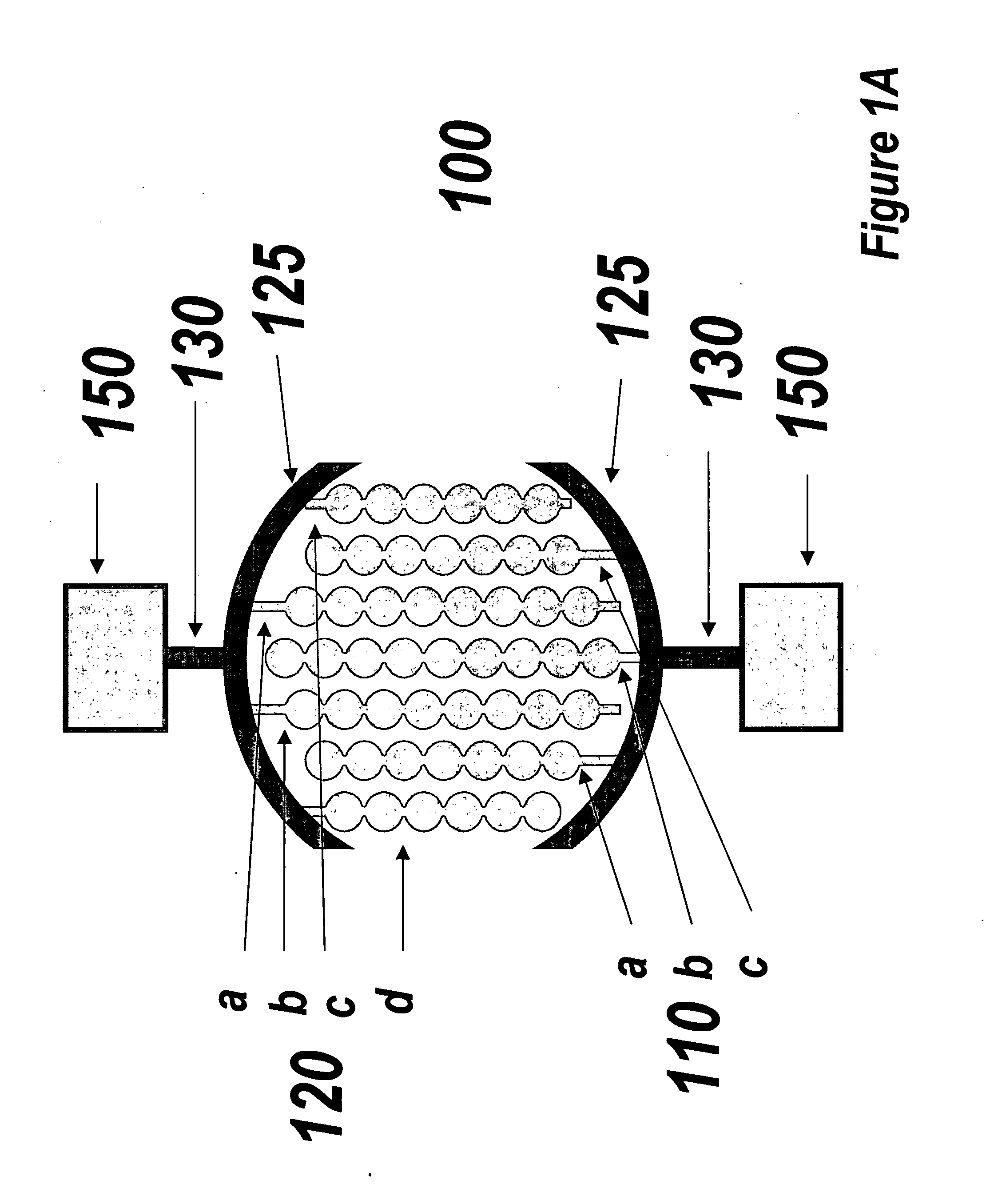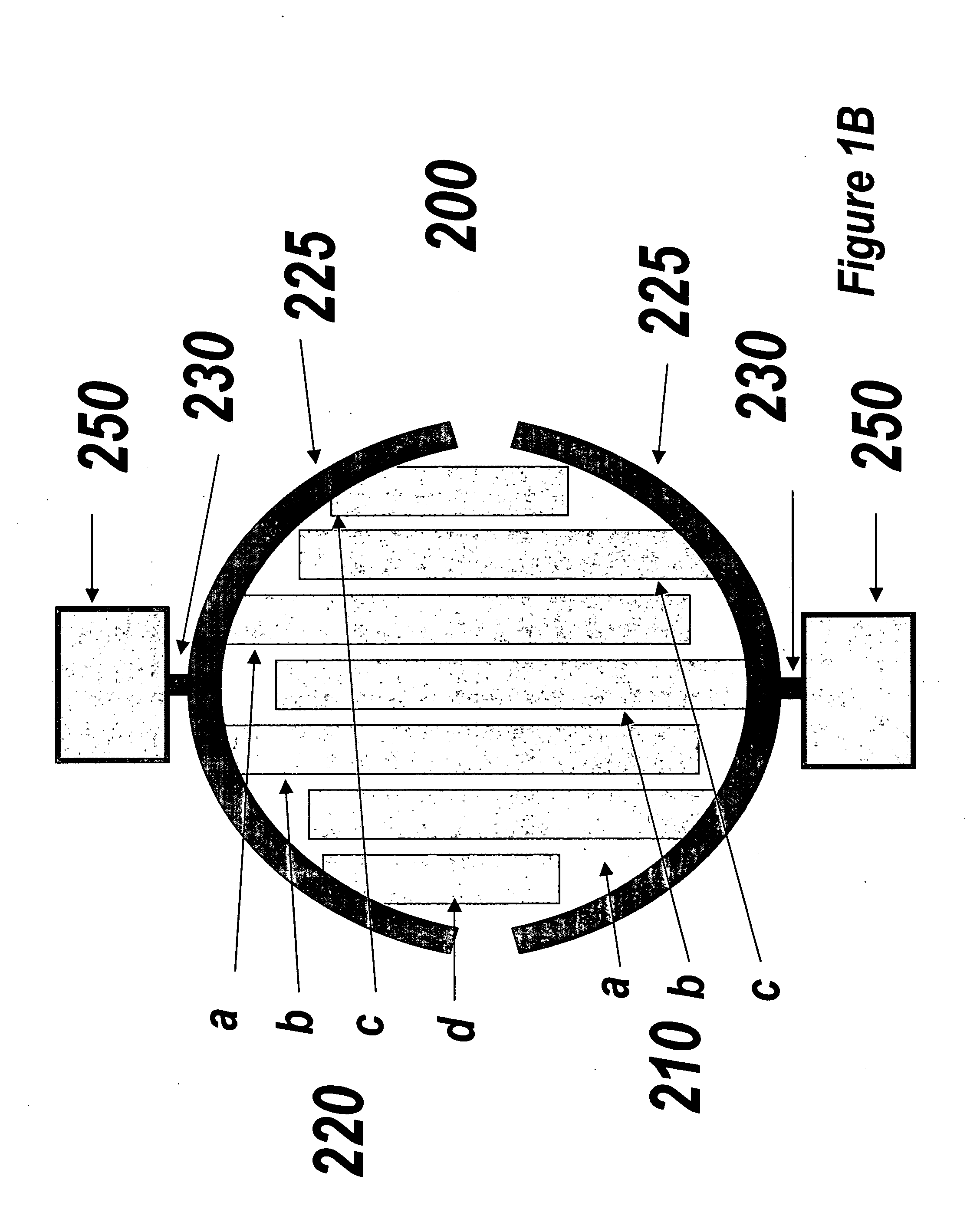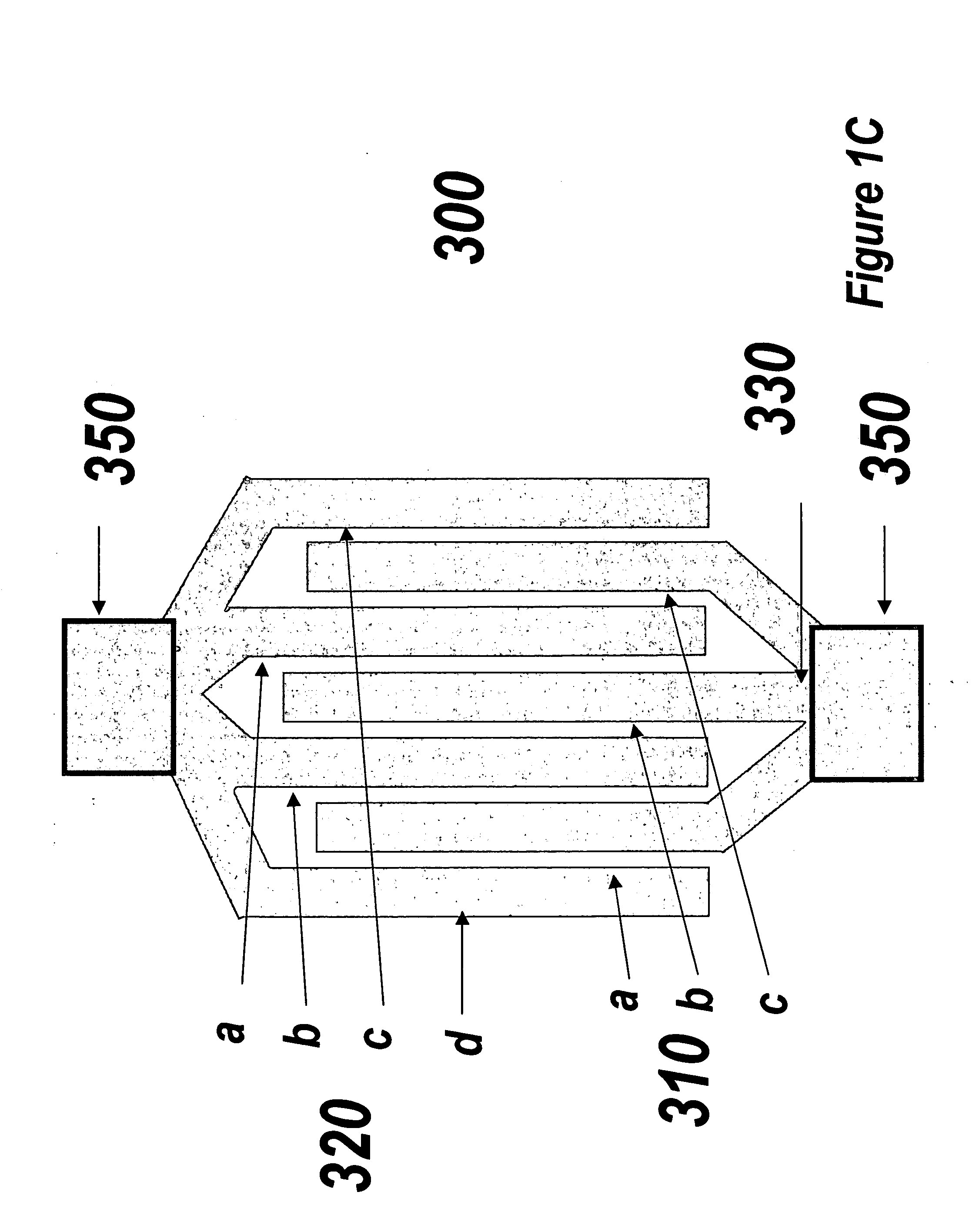Impedance based devices and methods for use in assays
- Summary
- Abstract
- Description
- Claims
- Application Information
AI Technical Summary
Benefits of technology
Problems solved by technology
Method used
Image
Examples
example 1
Resistance and Capacitive Reactance for 8 Different Types of Electrodes Attached with or without Cells
[0374]FIG. 26 illustrates resistance and reactance for 8 different types of electrodes attached with or without NIH 3T3 cells. The unit for both resistance and reactance is Ohm. The magnitudes of the reactance were plotted in a log-scale. Note that the polarity for the reactance at most of the frequencies was negative (capacitive reactance). The diameter of the electrode for 2AA, 2AB, 2AC, 2AD, and 3A is 1 mm; the diameter of the electrode for 2BE, 3B and 3C is 3 mm. The features of each electrode types are different and are summarized in Table 1. The surfaces of electrodes were coated with chemical and biological molecules. In this experiment, fibronectin was used. After coating, NIH 3T3 cells were then seeded onto the surfaces of the electrodes. The resistance and reactance (capacitive reactance) were measured at 0 hour (immediately after seeding the cells) and at two hours after...
example 2
Quantitative Measurement of Cells Using the 3B Electrode
[0375]FIG. 27 illustrates quantitative measurement of cells using the electrodes of 3B geometry. The apparatuses for experiments were constructed by gluing bottom less, conical or cylinder shaped plastic tubes over glass substrates on which 3B electrodes were fabricated. The plastic tubes had a diameter of about 5.5 mm on the end that was glued onto the glass substrates. The glass substrates formed the bottom of the wells (or fluidic containers) and the plastic tubes form the wall of the wells (or fluidic containers). Serial diluted NIH 3T3 cells (10,000 cells, 5,000 cells, 2,500 cells, 1,250 cells and 625 cells) were added into the apparatuses and onto the surface of the 3B electrodes that had been coated with fibronectin. Resistance and reactance were measured at 0 hour (immediately after seeding), and at 16 hours after seeding. The curves represent resistance and capacitive reactance data from a given frequency as indicated...
example 3
Real Time Monitoring of NIH 3T3 and PAE Cell Proliferation Using the 3C and 3B Electrodes
[0376]FIG. 28 illustrates real time monitoring of NIH 3T3 and porcine aortic endothelia (PAE) cell proliferation using the 3C and 3B electrodes. The apparatuses for experiments were constructed using similar methods to those described for FIG. 26 and FIG. 27. Two thousand five hundred NIH 3T3 cells and 2,500 PAE cells were seeded onto the coated electrodes. For NIH 3T3 cells, the electrode was coated with fibronectin; for PAE cells, the electrode was coated with gelatin. Resistance and capacitive reactance were measured daily to monitor the cell proliferation. Note that the polarity for the reactance at the frequency of 792 kHz was negative (capacitive reactance) and the magnitudes of the reactance were shown. Day 0 indicates the measurement immediately after seeding of the cells. Here, the capacitive reactance value shown in the figure is the absolute value. The resistance and capacitive react...
PUM
| Property | Measurement | Unit |
|---|---|---|
| Length | aaaaa | aaaaa |
| Length | aaaaa | aaaaa |
| Diameter | aaaaa | aaaaa |
Abstract
Description
Claims
Application Information
 Login to View More
Login to View More - R&D
- Intellectual Property
- Life Sciences
- Materials
- Tech Scout
- Unparalleled Data Quality
- Higher Quality Content
- 60% Fewer Hallucinations
Browse by: Latest US Patents, China's latest patents, Technical Efficacy Thesaurus, Application Domain, Technology Topic, Popular Technical Reports.
© 2025 PatSnap. All rights reserved.Legal|Privacy policy|Modern Slavery Act Transparency Statement|Sitemap|About US| Contact US: help@patsnap.com



